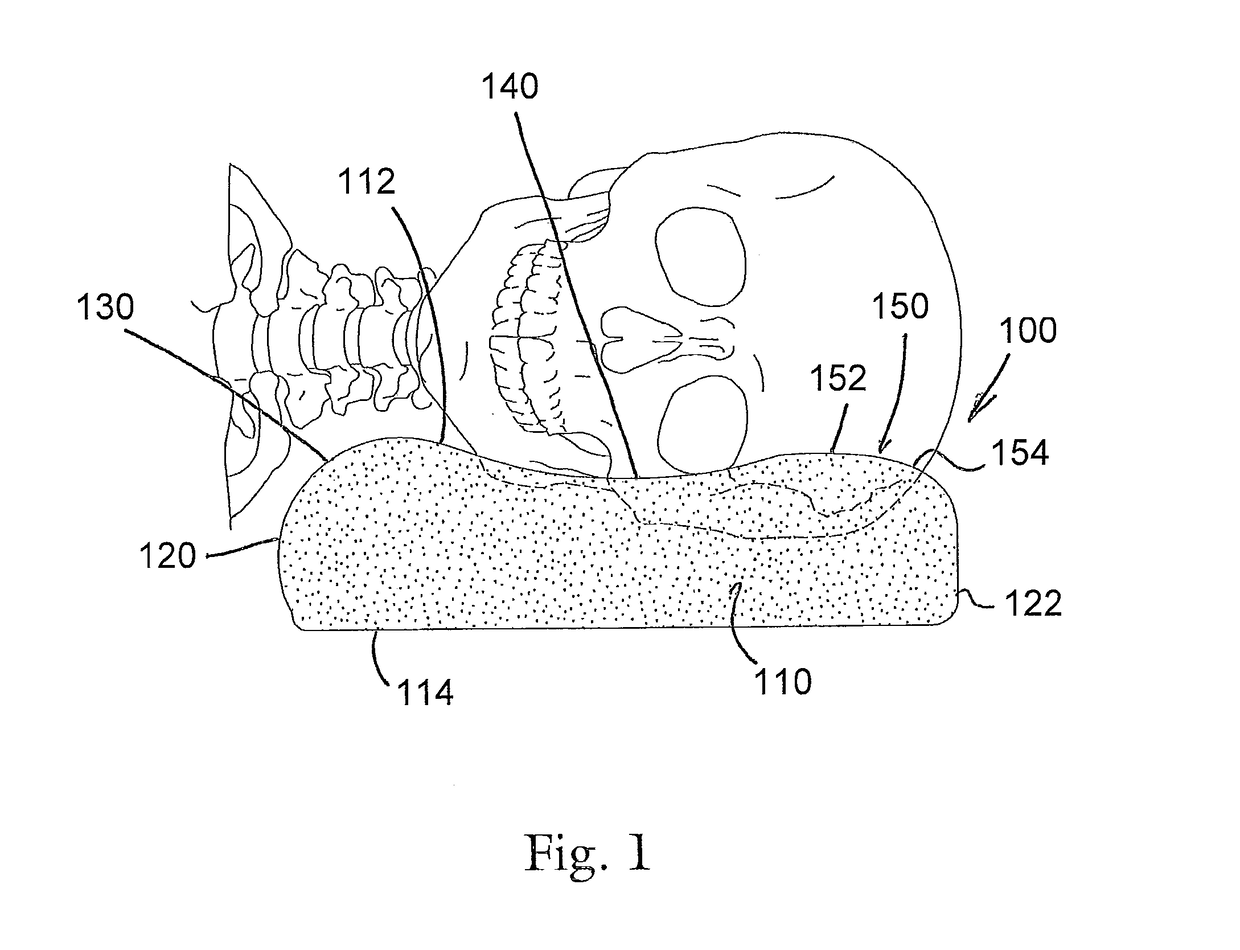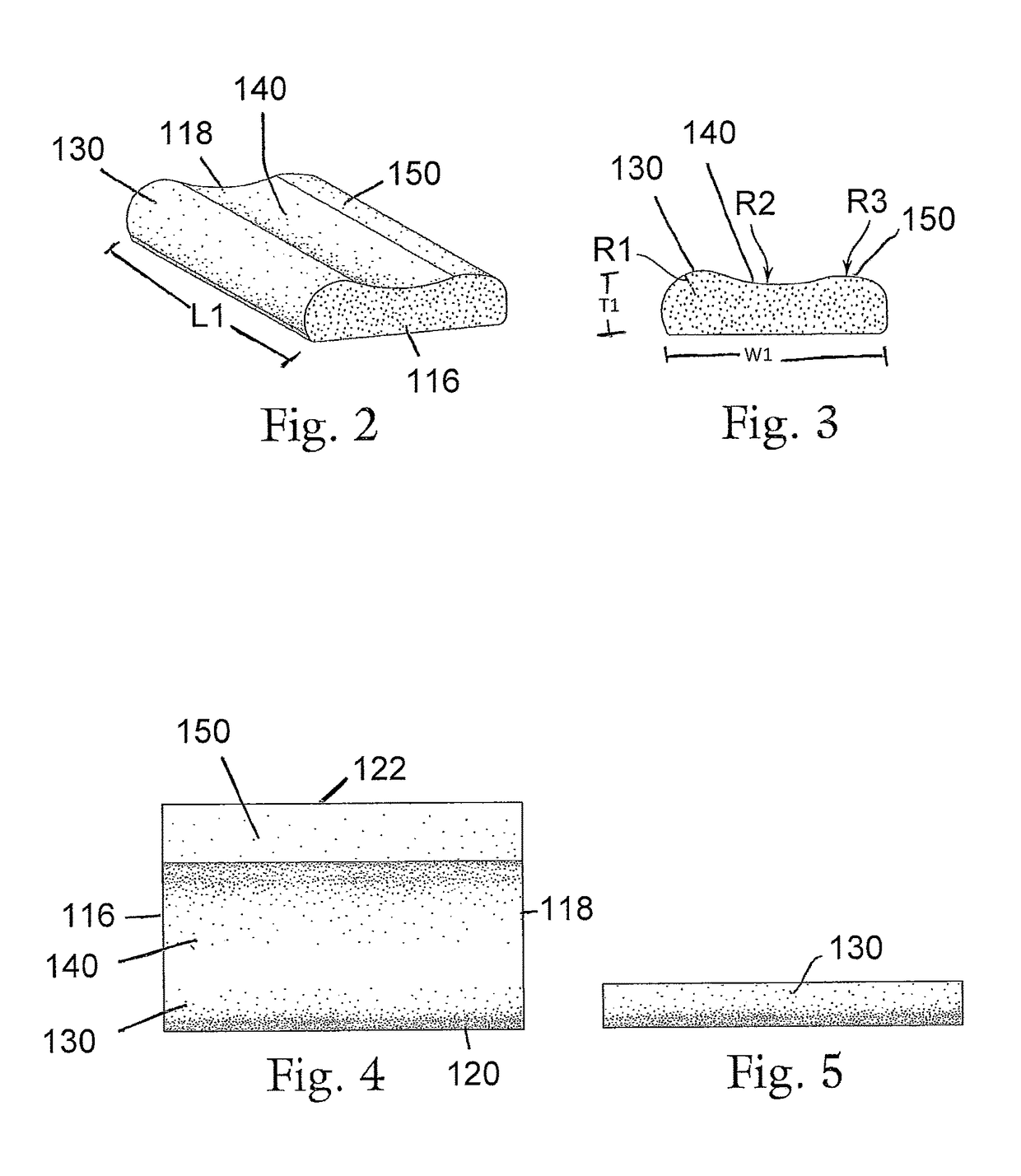Therapeutic pillow
a pillow and pillow body technology, applied in the field of neck support and correction devices, can solve the problems of inability to promote optimal alignment of neck and spine, out of alignment of the neck of a person lying in a supine or side-lying position, etc., to improve the alignment of the cervical vertebrae, improve the effect of alignment and amelioration of many adverse symptoms
- Summary
- Abstract
- Description
- Claims
- Application Information
AI Technical Summary
Benefits of technology
Problems solved by technology
Method used
Image
Examples
example 1
Cervical Curvature
[0210]Multiple patients presenting with abnormal cervical curvature (Cases 1-4) are assessed using the pillow 200 versus one or more pillows, including standard down-filled pillows, contoured polyester-filled pillows, commercial therapeutic interlocking-fill pillows or commercial contoured memory foam pillows. Standing curvatures range from −130 centimeter degrees (nearly straight) to −26 centimeter degrees (strongly convex). Upon lying supine on conventional pillows, the patients' abnormal cervical curvatures are either only slightly improved or worsened. In contrast, when lying supine on a Pillow 200 of the present disclosure, all patients showed markedly improved curvature of the cervical spine (curvature became positive, i.e. lordotic, for each patient).
[0211]Results are shown in Table 1 below (curvature measured in centimeters degree of arc):
[0212]
TABLE 1Curvature onCurvature onCurvatureConventionalPillow of theCaseStandingPillowDisclosure1 −68−150b+262 −26 −6...
example 2
Thoracic Alignment
[0216]Patient 6 is assessed using the pillow 600 versus a commercial contoured memory foam pillow. FIG. 30-A shows the patient's standing cervical alignment. The solid lines mark the edges of the patient's spinal column, and dotted line A marks the midpoint line. Ideally, the tip of each spinous process (white carets) should be located on or substantially close to the midpoint line. While most of the patient's spinous processes show proper alignment, the spinous process of vertebra T3 (marked C) is out of alignment (it is greater than 2.5 centimeters from the midpoint line). In FIG. 30-B, patient 6 is shown side-lying on the Pillow 600 of the present disclosure. Lying on this pillow causes the patient's deviant T3 vertebra (white caret B) to become properly aligned along the midline of the spine (dashed line A). In contrast, lying on the commercial contoured memory foam pillow, the patient's T3 vertebra (black caret C) remains out of alignment, and in addition, sev...
PUM
 Login to View More
Login to View More Abstract
Description
Claims
Application Information
 Login to View More
Login to View More - R&D
- Intellectual Property
- Life Sciences
- Materials
- Tech Scout
- Unparalleled Data Quality
- Higher Quality Content
- 60% Fewer Hallucinations
Browse by: Latest US Patents, China's latest patents, Technical Efficacy Thesaurus, Application Domain, Technology Topic, Popular Technical Reports.
© 2025 PatSnap. All rights reserved.Legal|Privacy policy|Modern Slavery Act Transparency Statement|Sitemap|About US| Contact US: help@patsnap.com



